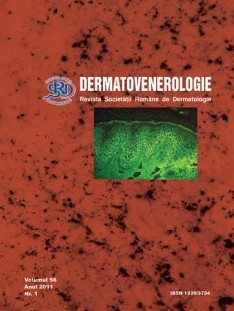Clinical cases
Pseudoxanthoma elasticum-like papillary dermal elastolysis: a case presentation
Background
Pseudoxanthoma elasticum-like papillary dermal elastolysis, together with upper dermal elastolysis, are characterized by a lack of elastic tissue in the papillary dermis. Pseudoxanthoma elasticum-like papillary dermal elastolysis is considered part of the spectrum of fibroelastolytic diseases of the skin, which includes mid-dermal elastolysis, upper dermal elastolysis, and white fibrous papulosis of the neck.
Clinical case
A 36-year-old Caucasian male patient was consulted for white-yellowish, non-follicular coalescing papules with a cobblestone-like appearance involving lateral sides of the neck. No history of previous trauma, excessive sun exposure or inflammation of affected area was recorded. Ophthalmologic and laboratory examinations were normal. Skin biopsy specimen treated with van Gieson stain reveals focal absence of elastic fibers in the superficial dermis and disrupted elastic fibers in the reticular dermis. Correlating clinical and histological appearances the diagnosis of pseudoxanthoma elasticum-like papillary dermal elastolysis was made.
Discussions
Pseudoxanthoma elasticum-like papillary dermal elastolysis is a rare condition thought to result from intrinsic cutaneous aging, ultraviolet radiation or abnormal elastogenesis. Pseudoxanthoma elasticum-like papillary dermal elastolysis manifests as flesh-colored to yellow papules with a cobblestone-like appearance symmetrically involving the upper chest, arms and axillae. Focal loss of elastic tissues in the papillary dermis is the histological hallmark of this condition. Although clinically similar, papillary dermal elastolysis lacks the systemic involvement commonly seen in pseudoxanthoma elasticum.
Conclusion
Pseudoxanthoma elasticum-like pap-illary dermal elastolysis is a rare condition, clinically similar to pseudoxanthoma elasticum, and histologically characterized by focal loss of elastic tissue in the papillary dermis.


